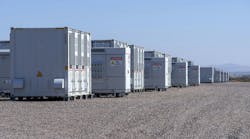Siemens and Netze BW brought their joint project “Network laboratory Niederstetten – distributed network intelligence” in Niederstetten in Baden-Württemberg, Germany, to a successful conclusion at the end of October 2015 with the startup of an innovative automation solution for the primary distribution grid. The point at this smart distribution network project is to find a solution that will enable more distributed and renewable energy sources to be integrated in the grid without jeopardizing system stability, and that also allows greater utilization of the existing cables’ capacity. Another aim is to detect and localize system faults and restore networks more quickly. The startup marks the beginning of a one-year pilot phase. Looking forward, the objective is to optimize the technology so that the new grid automation solution can be employed on a wide scale.
Over the course of the project, Siemens and Netze BW collaborate on the development of an intelligent voltage control system to maximize the amount of energy that can be fed in from distributed energy sources – for example, from photovoltaic systems and wind power plants – while also fulfilling all of the other requirements. In the future, the distribution grid in the Niederstetten region’s system will operate independently to the greatest possible extent. This is true to the motto “More intelligence, less copper” – in other words, with as much intelligence and as few additional medium-voltage cables as possible.
“Intelligent power supply grids will allow us to successfully implement the energy transition in Germany. The technology has existed for a longtime. In Niederstetten we demonstrate how existing distribution grids can be made fit for the future with tried and tested products and systems from our automation portfolio,” said Jan Mrosik, CEO of Siemens Energy Management Division.
“As a distribution grid operator, our primary goal is to enable the energy transition to a new energy mix at a reasonable cost and to help move it forward without compromising supply security. Today, distributed grid intelligence is ensuring that the distribution grid in Niederstetten will remain viable into the future, and that we will be able to optimally use our existing grid infrastructure,” said Martin Konermann, Technical Director at Netze BW.
The core element of the project is a distributed regional controller that acts as an automation unit in the Niederstetten substation to control and monitor the medium-voltage grid. The controller is based on a Siemens Sicam automation system and is responsible for voltage control and fault management as well as providing the communications connection. In addition to the on-site automation technology, the distributed regional controller also forwards compressed data from intelligent field devices to the central SCADA system (supervisory control and data acquisition).
The main emphasis of the “Distributed network intelligence” project is on network monitoring and fault management with intelligent measurement technology and long-range control for active voltage stability. For this purpose, nine secondary substations located at the most important nodal points are equipped with grid automation technology, and five substations are equipped with voltage measurement systems in the dead-end feeders. The measured data can be transferred by remote transmission. A network study on the fault management system with a detailed reliability calculation was also conducted on the Niederstetten power grid. In the event of a fault, the regional controller working in interaction with the grid automation system enables the supply to be restored to the affected network sections in less than a minute. This restricts the propagation of the fault to a minimal network area.
Two medium-voltage in-phase regulators, including power quality measurement on the primary and secondary side, have been installed for long-range voltage control. The voltage in the network lines is set by the medium-voltage regulators to a level that satisfies the requirements of industrial consumers and allows electricity from distributed power generators to be fed in without restriction. The voltage controllers receive their step commands from the regional controller on the basis of the distributed voltage measurement in the medium-voltage power grid.
The northern supply region of the Niederstetten substation comprises two circuits with a total of 84 secondary substations and long sections with medium voltage overhead lines. About 45 percent of the cabling is buried underground. Distributed network intelligence has now made it possible to feed other renewable energy sources in the region into the grid without causing the voltage in the dead-end feeders to rise as it did in the past. Another plus point is that the power grid in the Niederstetten region no longer reaches its loading-capacity limit as quickly as before and is fit for the further implementation of the energy transition.


